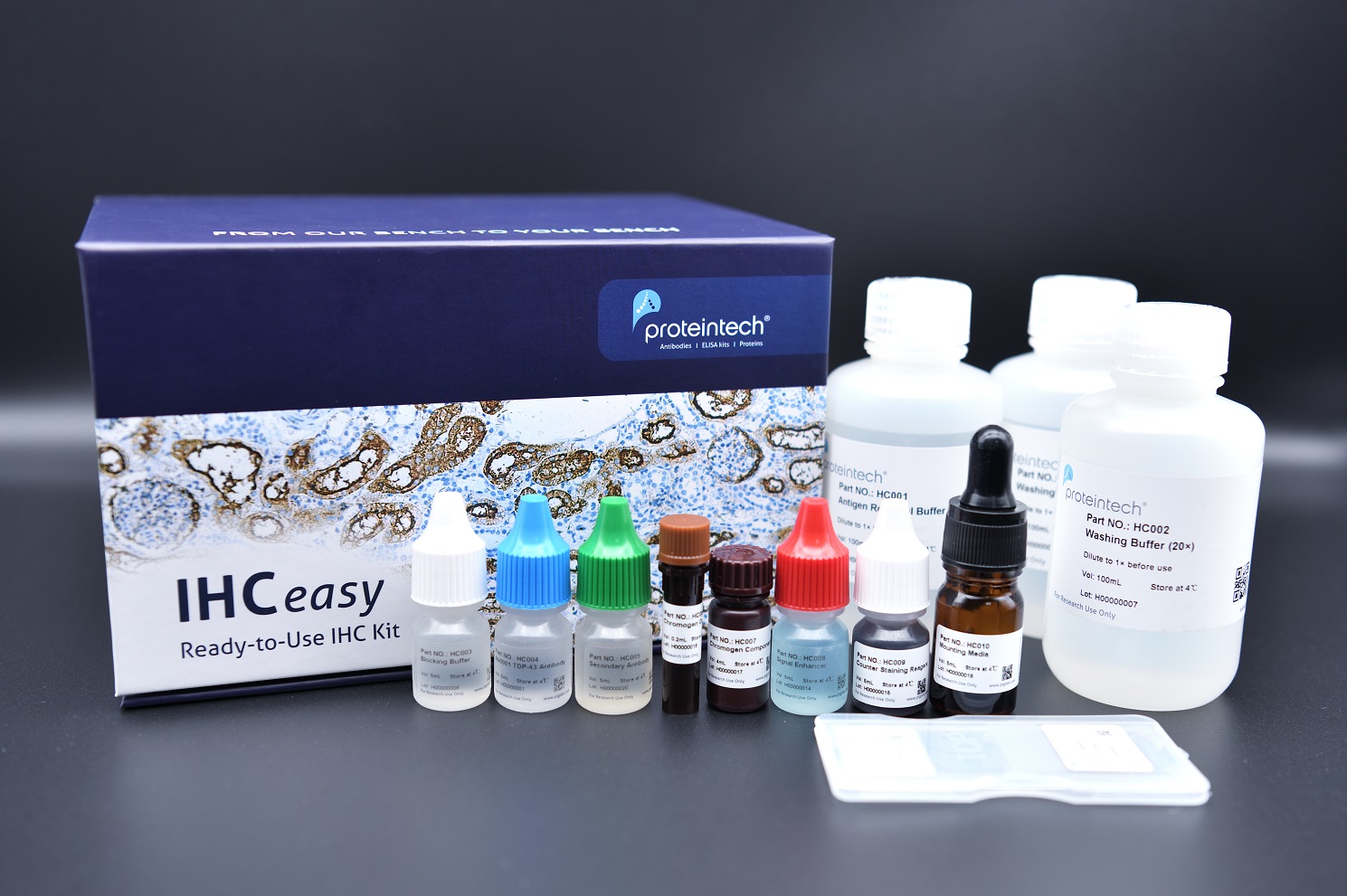IHCeasy FGD2 Ready-To-Use IHC Kit
FGD2 Ready-to-use reagent kit for IHC.
Reactivity
Human
Sample Type
FFPE tissue
Cat No : KHC2626
Synonyms
FGD2,FYVE, RhoGEF and PH domain-containing protein
Validation Data Gallery
Product Information
KHC2626 is a ready-to-use IHC kit for staining of FGD2. The kit provides all reagents, from antigen retrieval to cover slip mounting, that require little to no diluting or handling prior to use. Simply apply the reagents to your sample slide according to the protocol and you're steps away from obtaining high-quality IHC data.
| Product name | IHCeasy FGD2 Ready-To-Use IHC Kit |
| Sample type | FFPE tissue |
| Assay type | Immunohistochemistry |
| Primary antibody type | Rabbit Polyclonal |
| Secondary antibody type | Polymer-HRP-Goat anti-Rabbit |
| Reactivity | Human |
Kit components
| Component | Size | Concentration |
|---|---|---|
| Antigen Retrieval Buffer | 100 mL | 50× |
| Washing Buffer | 100 mL ×2 | 20× |
| Blocking Buffer | 5 mL | RTU |
| Primary Antibody | 5 mL | RTU |
| Secondary Antibody | 5 mL | RTU |
| Chromogen Component A | 0.2 mL | RTU |
| Chromogen Component B | 4 mL | RTU |
| Signal Enhancer | 5 mL | RTU |
| Counter Staining Reagent | 5 mL | RTU |
| Mounting Media | 5 mL | RTU |
| Datasheet | 1 Copy | |
| Manual | 1 Copy |
Background Information
FGD2 is a member of the formin family of proteins, which are known for their role in regulating the assembly of actin filaments. Formins are characterized by their ability to nucleate and elongate actin filaments, and they play a crucial role in processes that require dynamic actin structures, such as cell motility and cell division. Mutations or alterations in FGD2 have been associated with certain developmental disorders and diseases. For example, mutations in FGD2 are a cause of faciogenital dysplasia (Aarskog-Scott syndrome), a condition characterized by facial and genital abnormalities and short stature.
Properties
| Storage Instructions | All the reagents are stored at 2-8°C. The kit is stable for 6 months from the date of receipt. |
| Synonyms | FGD2,FYVE, RhoGEF and PH domain-containing protein |

